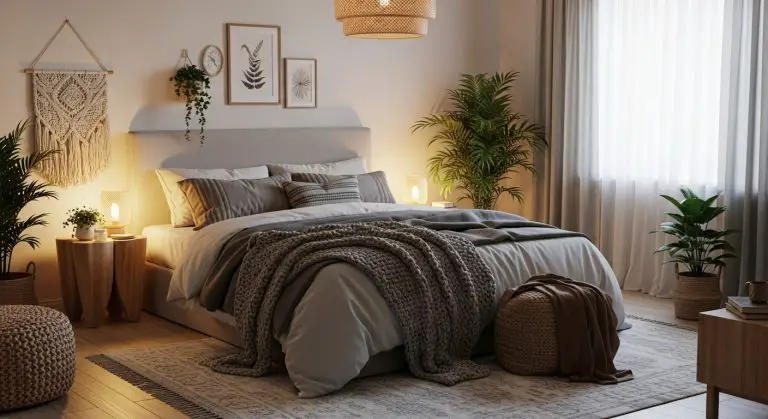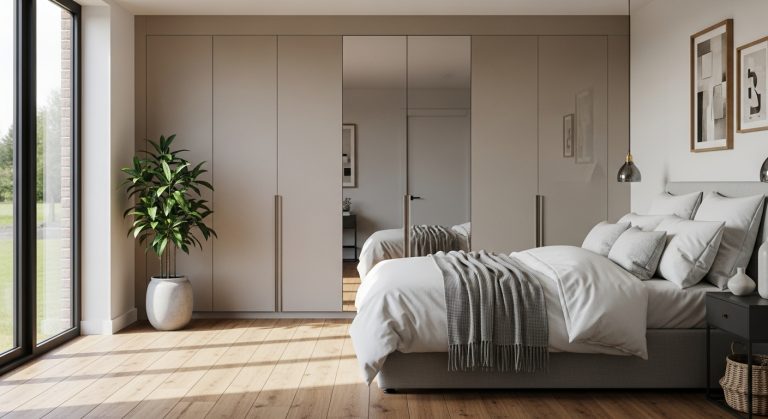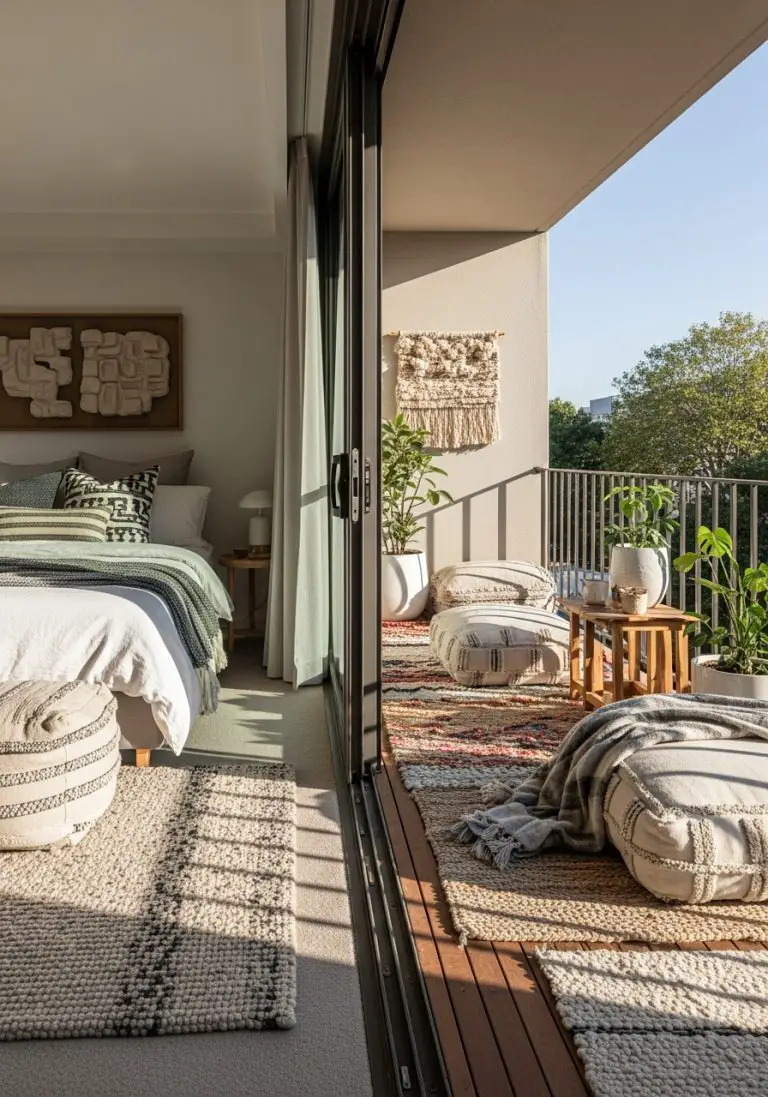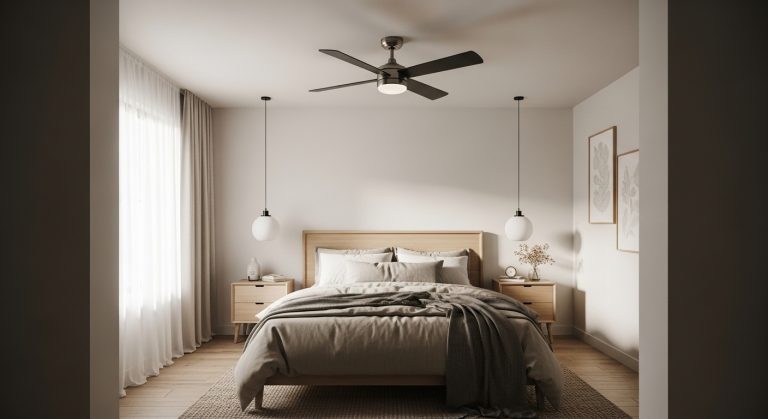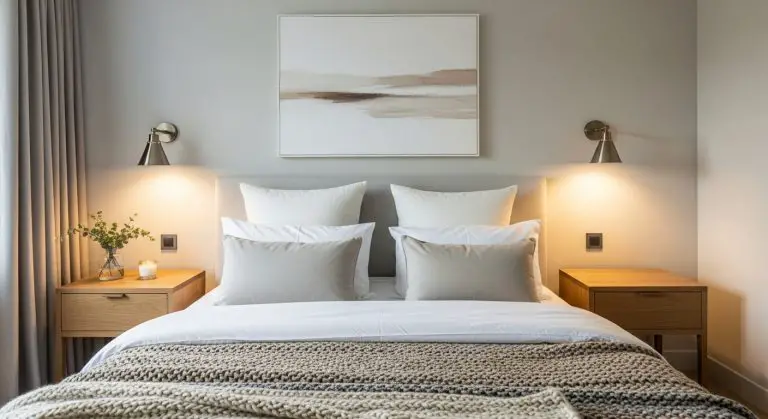Boy and Girl Shared Bedroom: 21 Creative Ideas for a Fun, Functional Space
Let’s be real—designing a boy and girl shared bedroom can feel like juggling fire while riding a unicycle. Two personalities, two styles, and a limited space? Yikes. But guess what?
With a little planning, a dash of creativity, and maybe a sprinkle of humor, you can craft a room that works for both kids and feels spacious. I’ve personally tackled this with my niece and nephew (FYI, chaos + color = learning curve), and trust me, some strategies are pure gold.
So, buckle up—we’re diving into 21 killer ideas to make your shared bedroom both practical and playful.
1. Zoning the Room with Furniture
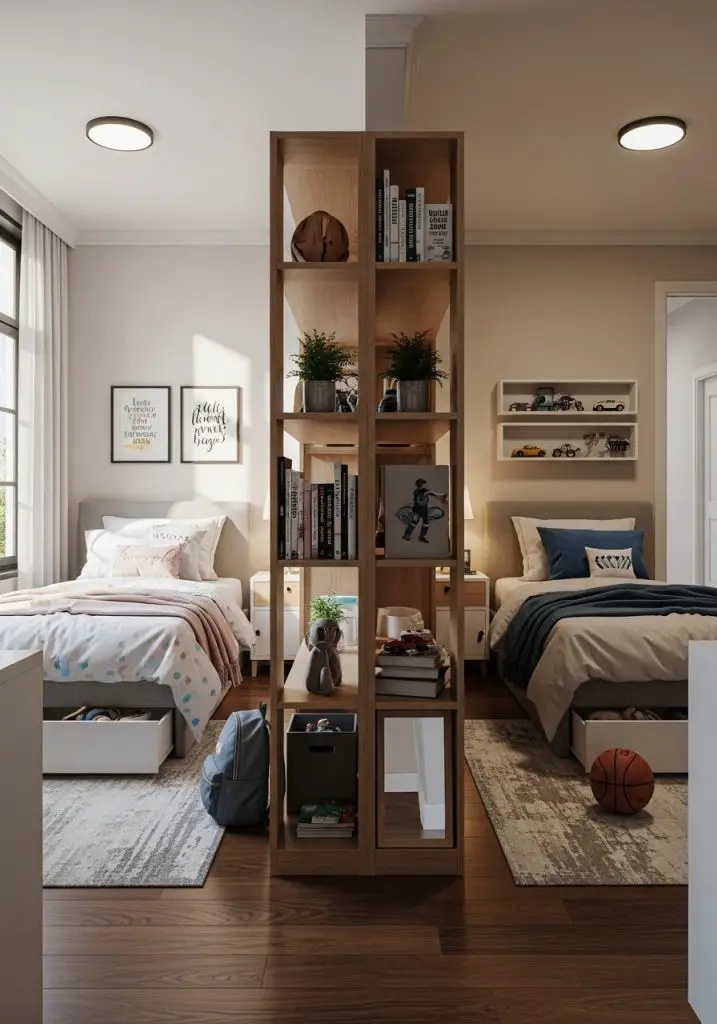
Ever walked into a room and immediately knew who’s desk is whose? That’s zoning in action. Use furniture to divide the space naturally. Bookshelves, wardrobes, or tall dressers can act as room separators while still leaving an open feel. For example, a bookshelf between beds doubles as storage and a privacy buffer. I tried this with my niece and nephew—they loved having “their corner,” and it drastically reduced the arguments over personal space.
Pro tip: Opt for open shelving. It keeps things airy while giving kids access to their stuff without always bothering the other person. Zones aren’t just neat—they’re sanity savers.
2. Bunk Beds with Individual Styles
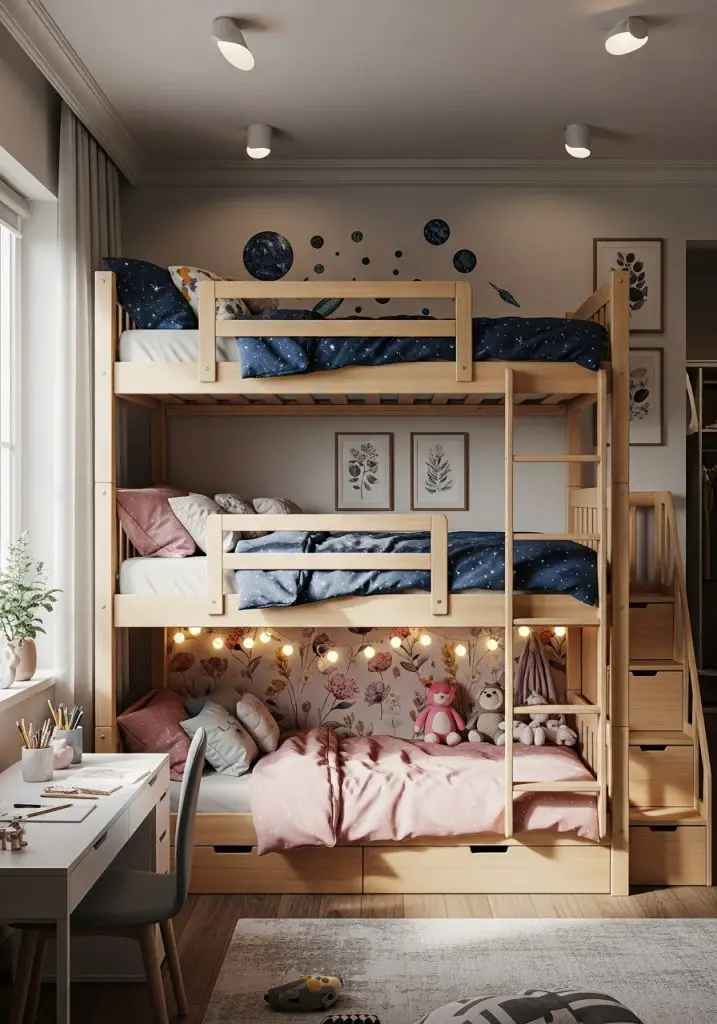
Bunk beds aren’t just for saving space—they can be a style statement. You can let each child personalize their bunk with different bedding, wall decals, or fairy lights. One kid gets a galaxy theme; the other rocks a sports vibe. My nephew claims he’s “the captain of the top bunk,” while my niece decorates the bottom with fairy lights—it works like magic.
Why it’s awesome: It maximizes floor space for play or study, and each child feels ownership over their own bed. Plus, climbing up and down adds a tiny daily workout (bonus!).
3. Dual Desks for Homework Harmony

Homework wars? Been there. Avoid chaos by giving each child their own desk. Even small desks can work if you position them cleverly, like back-to-back or L-shaped against different walls. My niece and nephew actually do their homework without squabbling now—mostly.
Tip: Add some playful, removable wall decals above each desk so each space feels unique. It’s a subtle yet effective way to keep things personal while staying in one room.
4. Color-Coding Without Overdoing It
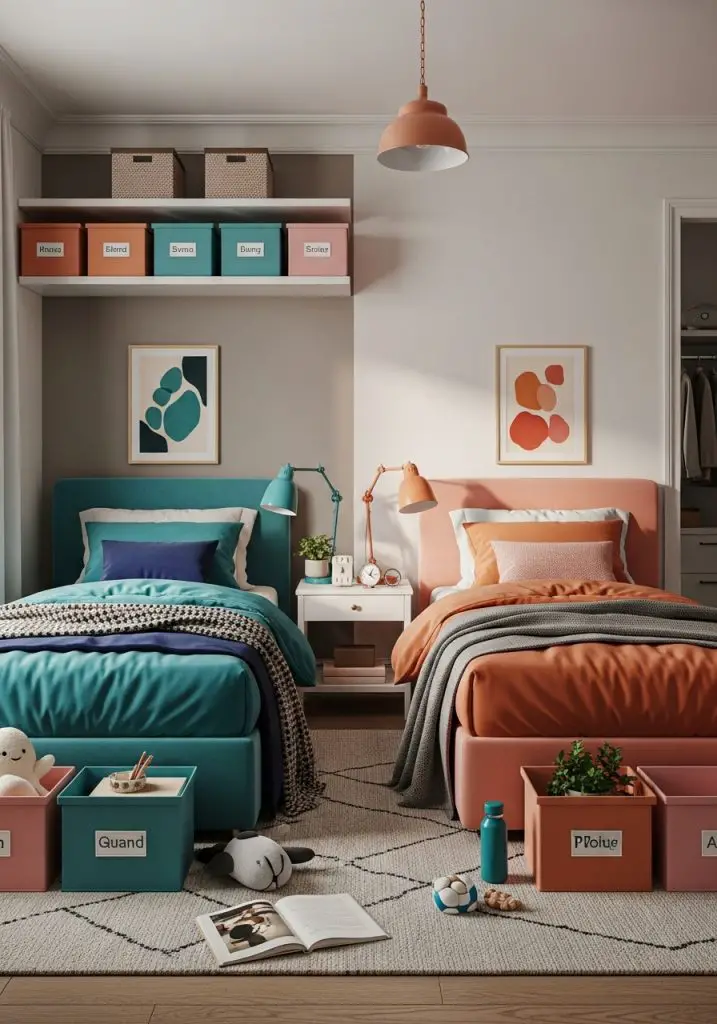
You don’t have to paint the room half pink, half blue (phew!). Color-coding accents works wonders. Think bedding, rugs, or storage bins. My approach? Neutral walls, bold pops for each kid. One gets orange throw pillows, the other teal. Instant differentiation, zero clash.
Extra idea: Use colored frames for personal art or photos. Each kid instantly knows which side belongs to them, and the room looks cohesive instead of chaotic.
5. Shared Closet, Organized Chaos
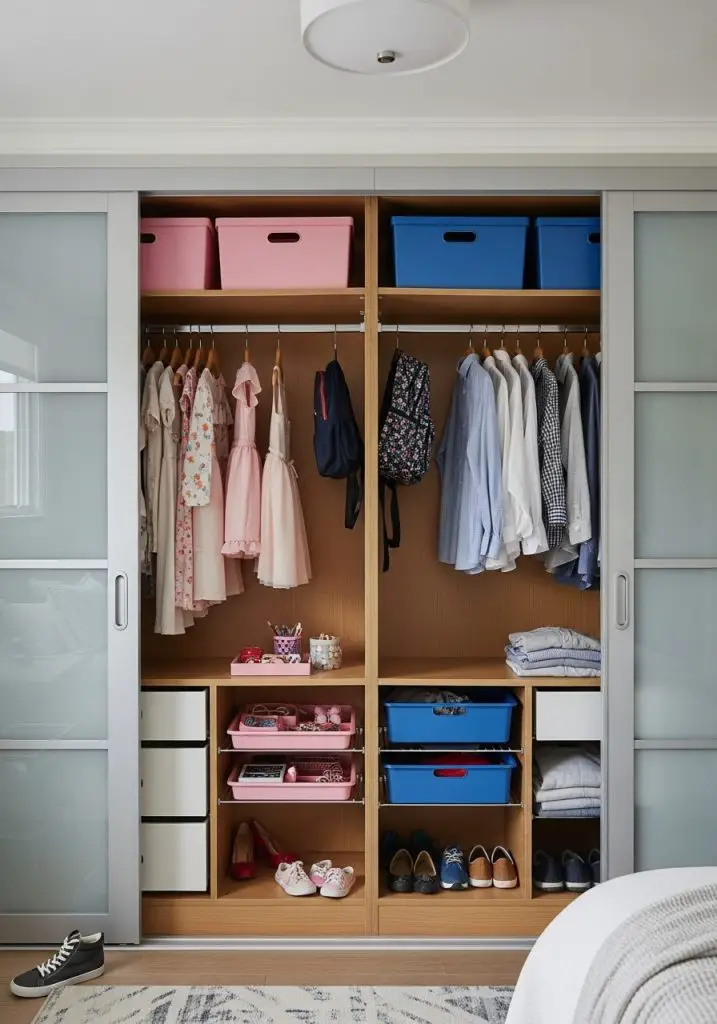
A shared closet doesn’t have to be a war zone. Install dividers or labeled bins so each child knows where their clothes go. My niece and nephew have a color-coded system: blue for him, pink for her. It’s absurdly effective (and yes, even teenagers can stick to it sometimes).
Bonus tip: Hooks on the wall for daily clothes save the “where’s my shirt?!” meltdown every morning. Trust me, this one trick alone brings peace before breakfast.
6. Personalized Wall Art Corners
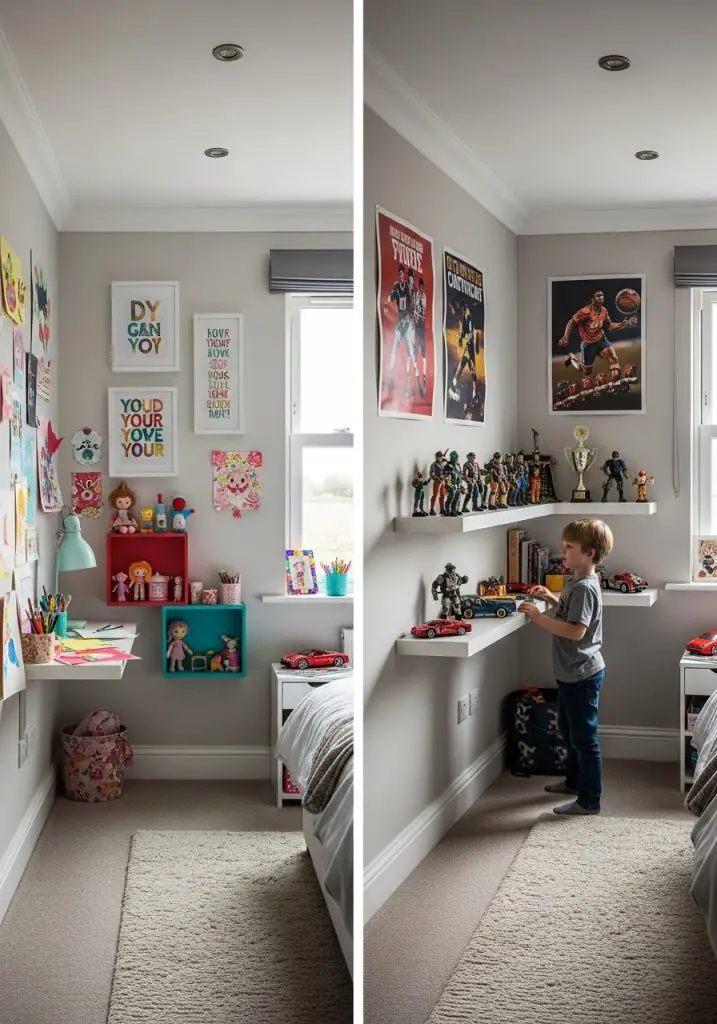
Walls are blank canvases screaming for personality. Dedicate one wall per child for photos, posters, or art. My niece covers her section with DIY crafts, while my nephew claims his is “museum-worthy” with sports memorabilia.
Why it matters: It gives kids ownership, sparks creativity, and honestly, it’s a conversation starter when friends visit. A shared bedroom can feel personal without feeling crowded if you respect wall territories.
7. Loft Beds to Maximize Floor Space
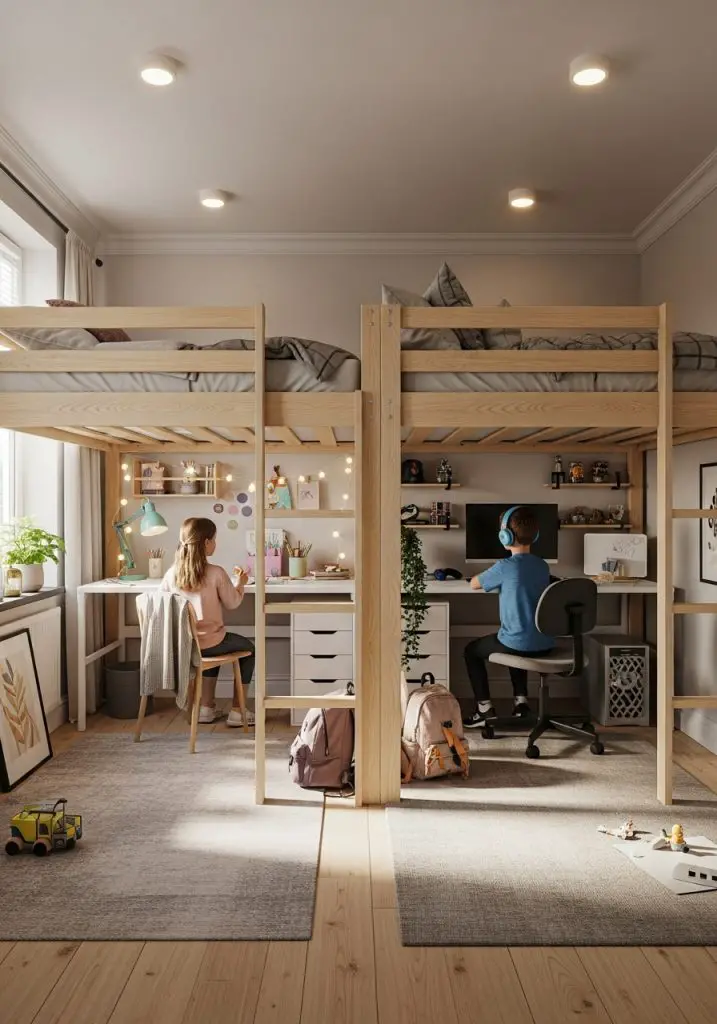
If floor space is tight, loft beds are a lifesaver. My niece loves having her desk under her loft bed, while my nephew uses the extra space for a gaming corner. It’s like creating two mini apartments inside one room.
Pro tip: Make sure the loft is sturdy and has guardrails. Safety first, fun second. Kids love the elevated perspective, and parents love the room to breathe.
8. Storage Bins That Double as Seating
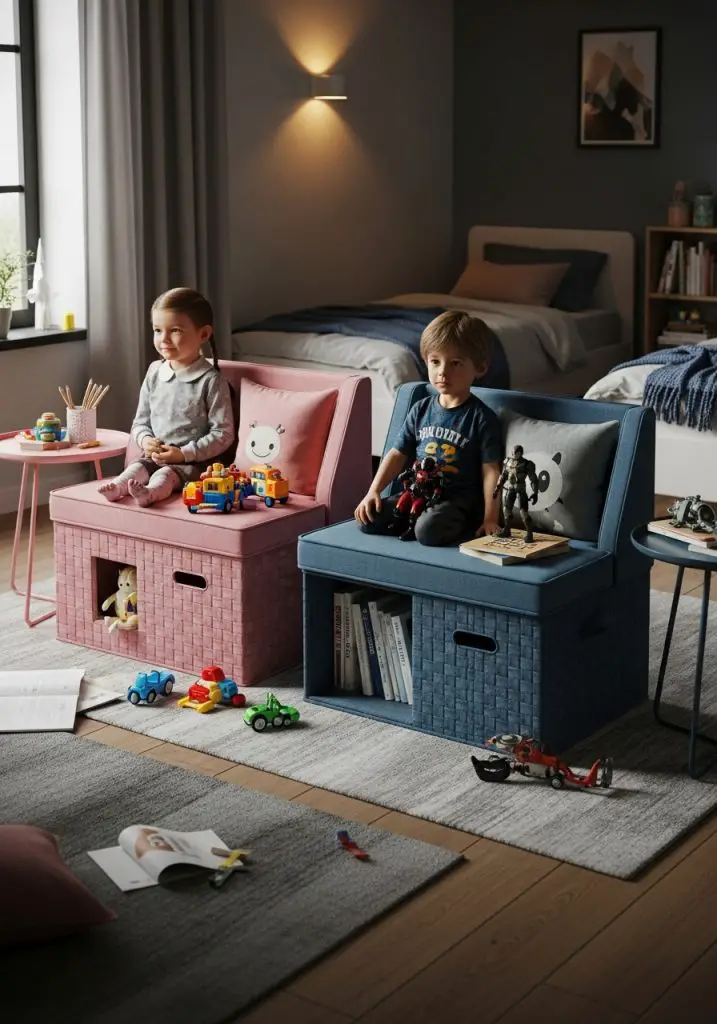
Functional and sneaky stylish? Yes, please. Use storage ottomans or bins that also act as seating. My nieces and nephews love dumping toys in them and sitting on top to play board games.
Bonus: Choose colorful bins that match each child’s aesthetic. No one can argue over what belongs to whom—they’re labeled, but fun.
9. Divide the Room with Curtains

If you’re tight on space but crave privacy, curtains are a cheap and flexible option. Pull them across for a “room within a room” effect. My niece uses her curtain to create a mini reading nook—quiet, cozy, and hers.
Extra tip: Use light, airy fabric so it doesn’t feel like a dungeon. Bonus points if you hang fairy lights along the curtain rod. Instant magic.
10. Theme Integration Without Clashing
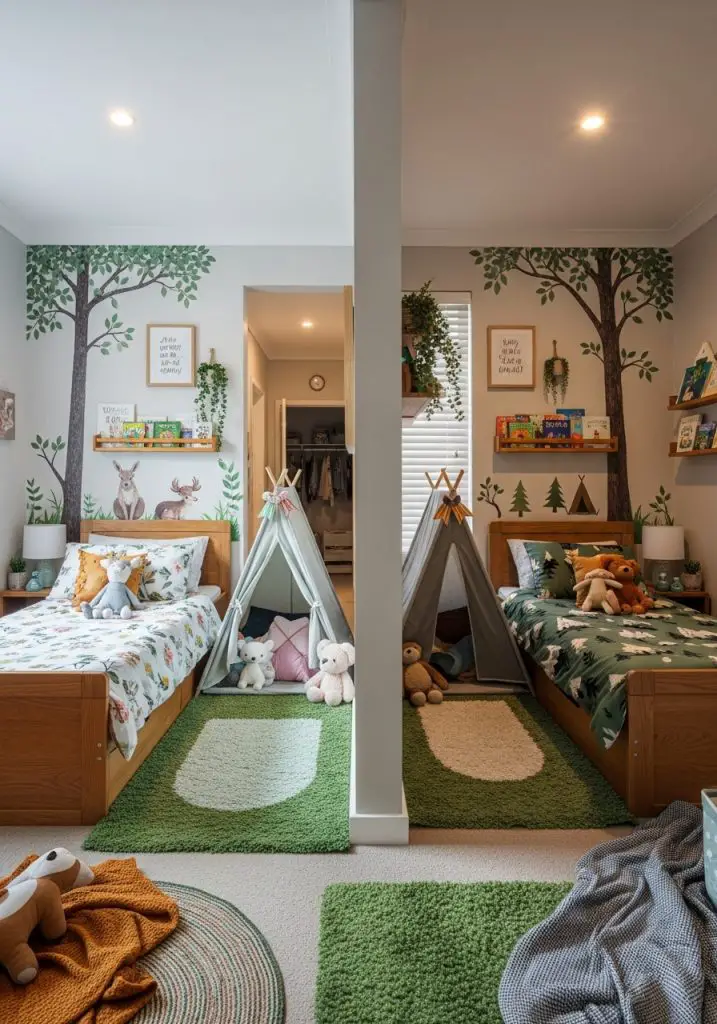
Themes don’t have to fight. One tip? Stick to one main theme with unique sub-themes. For instance, a forest theme overall, but one side has camping vibes, the other has woodland animals. My niece and nephew actually agreed on this once—miracle!
Why it works: Themes give structure without forcing rigid separation. It feels cohesive yet allows personal expression.
11. Floating Shelves for Personal Items
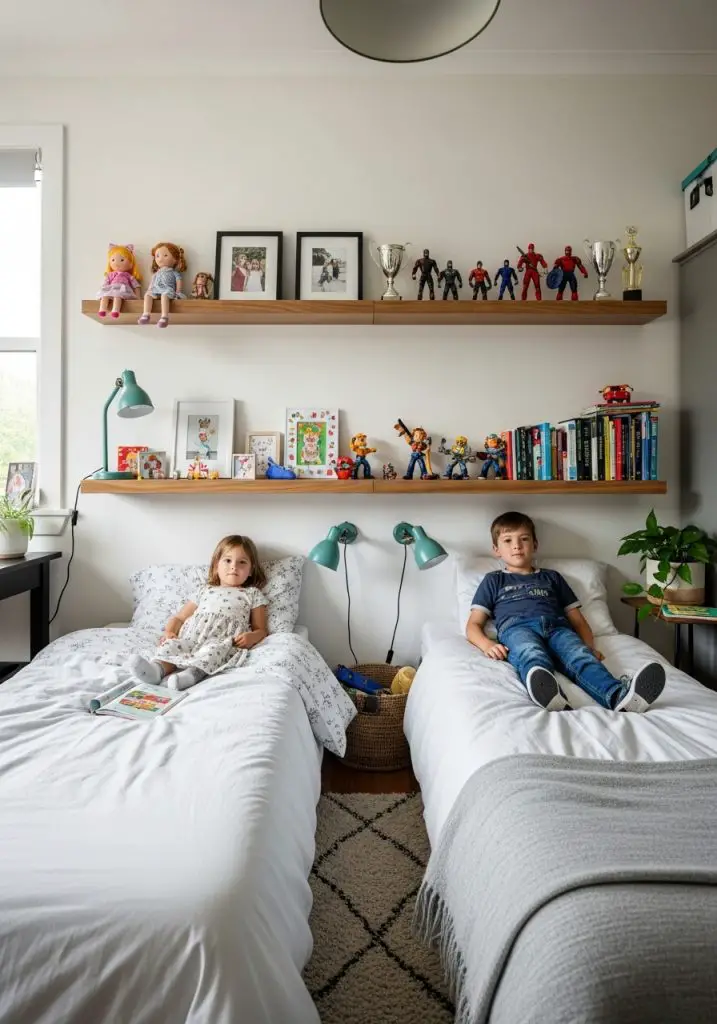
Floating shelves are a game-changer. Each child gets a row of shelves for trophies, toys, or books. My niece’s shelves overflow with dolls, while my nephew’s hold action figures.
Pro tip: Install at eye level for each kid. It’s functional, fun, and prevents the “accidental shelf raid” arguments. Minimalism meets personalization—win-win.
12. Rug Zones to Define Areas

Rugs aren’t just decorative—they literally define space. Use distinct rugs for each child’s corner. One gets a geometric print, the other a soft shag. It creates visual separation and soft landing spots for play or reading.
Extra: Rugs also absorb sound—less yelling when one is doing homework and the other is gaming. Believe me, this is underrated but crucial in shared bedrooms.
13. DIY Pegboards for Creative Storage
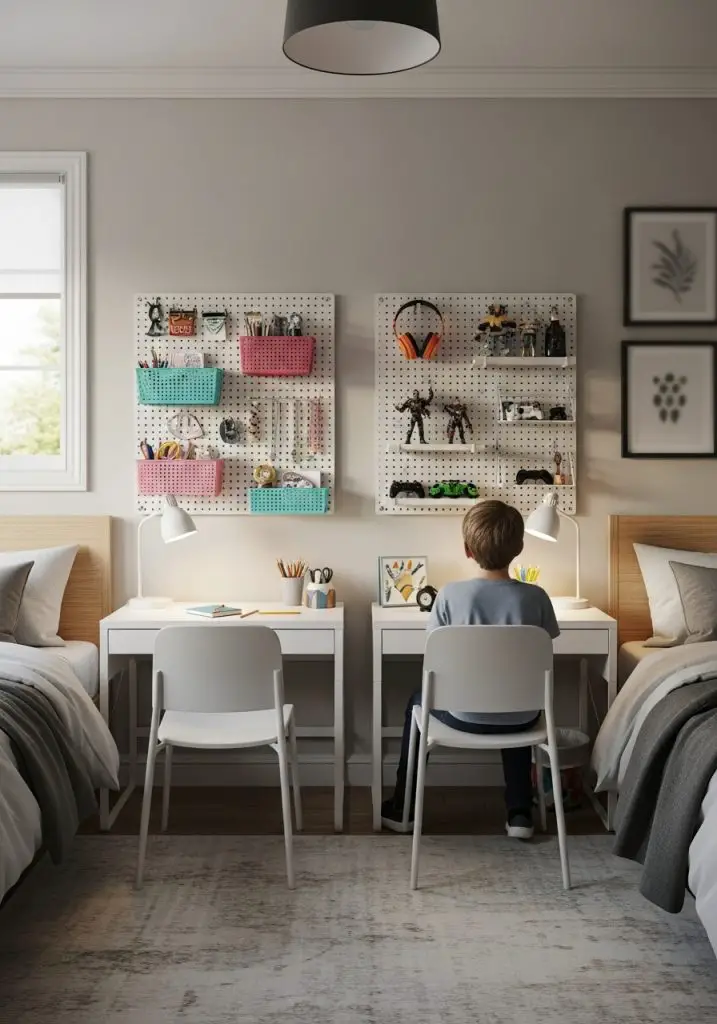
Pegboards are versatile and fun. Install one for each child to hang supplies, jewelry, or gadgets. My niece loves clipping colorful baskets for craft items, while my nephew hangs his gaming headset and controllers.
Why it rocks: It keeps clutter off surfaces, gives each kid a personal display area, and encourages creativity. Plus, it’s easily changeable as kids grow.
14. Nightstands That Respect Personal Space
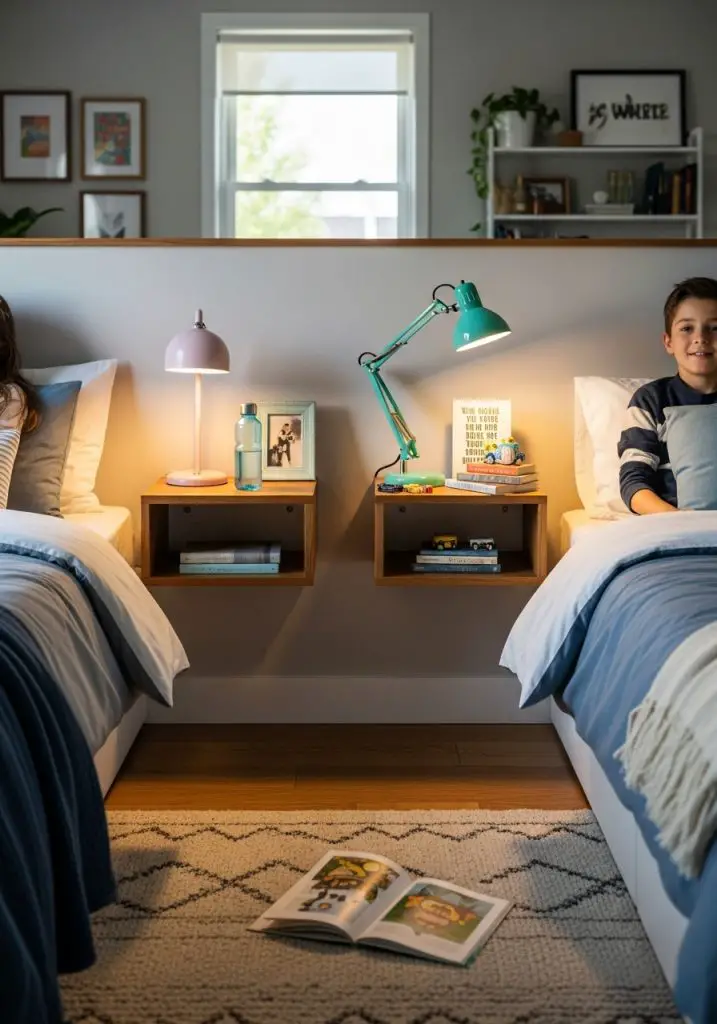
Nightstands don’t have to be shared—they rarely survive that. My niece and nephew each have tiny, wall-mounted nightstands. They hold lamps, water bottles, and bedtime books. Personal, practical, and zero midnight “hey, that’s mine!” moments.
Tip: Keep it minimal to avoid clutter—one lamp, one favorite item per child. Trust me, they don’t need more.
15. Creative Wall Dividers with Open Frames
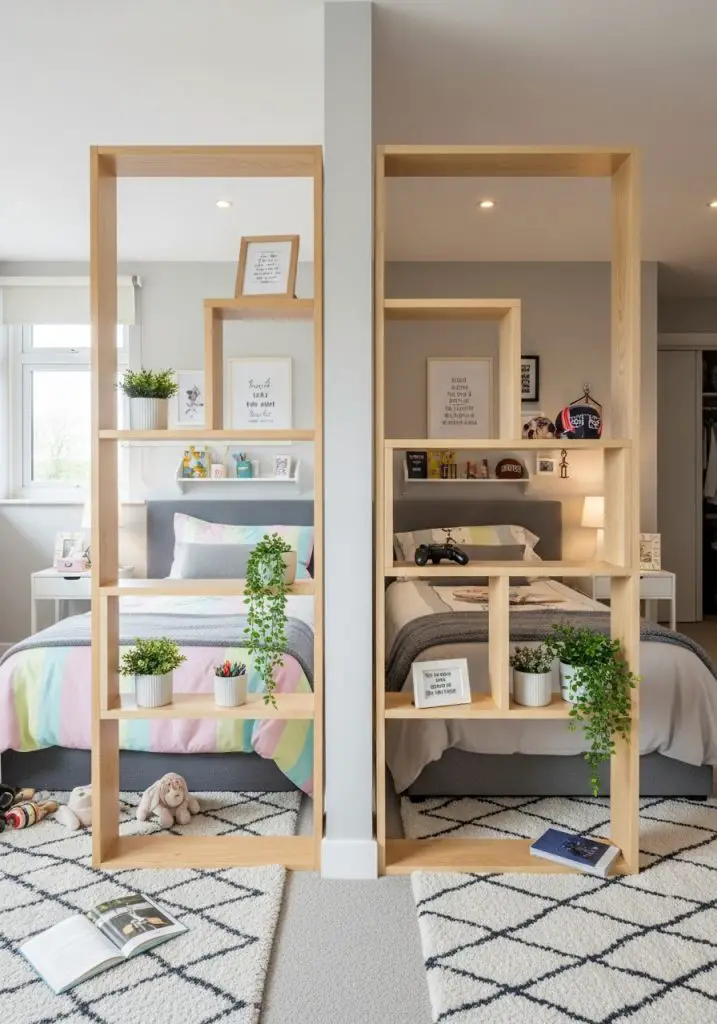
Instead of solid walls, try open-frame dividers. They give a sense of privacy while letting light and air flow. My niece calls hers “my secret window,” and my nephew appreciates the airflow for his electronics.
Pro tip: Decorate frames with fairy lights or small plants. Functional and Instagram-worthy—yes, really.
16. Rotating Display Boards
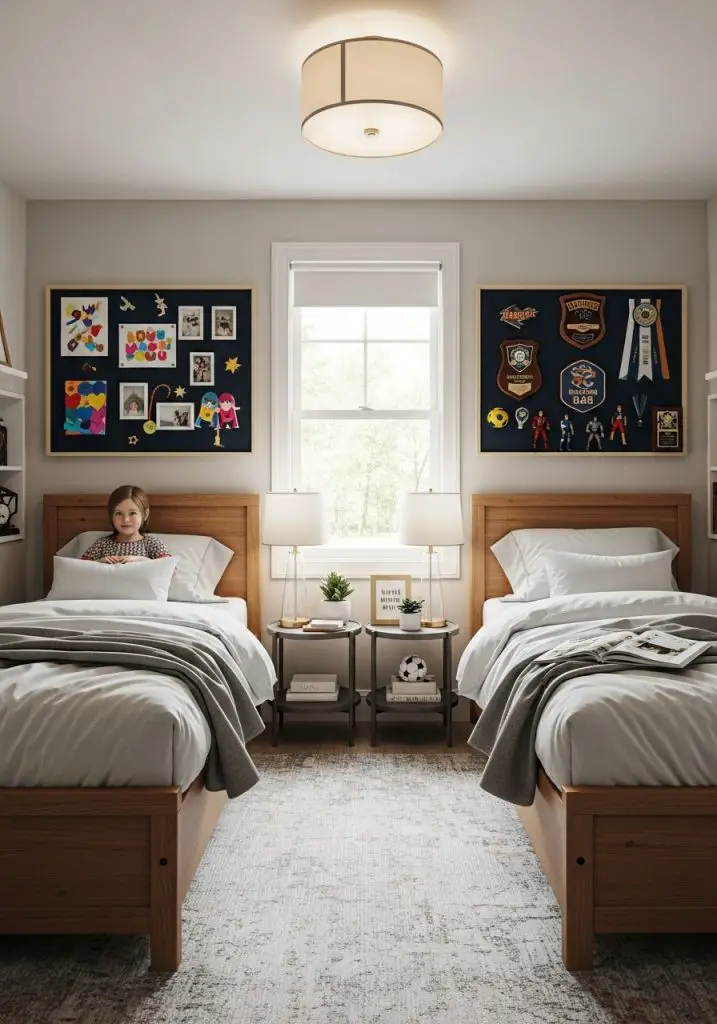
Have one display board per child for artwork or awards, but rotate weekly. Keeps the room fresh and reduces clutter. My niece is obsessed with seeing her crafts on display, and my nephew actually updates his side without complaints.
Extra idea: This rotation teaches sharing space without permanent sacrifice—win-win parenting strategy.
17. Layered Lighting for Different Moods
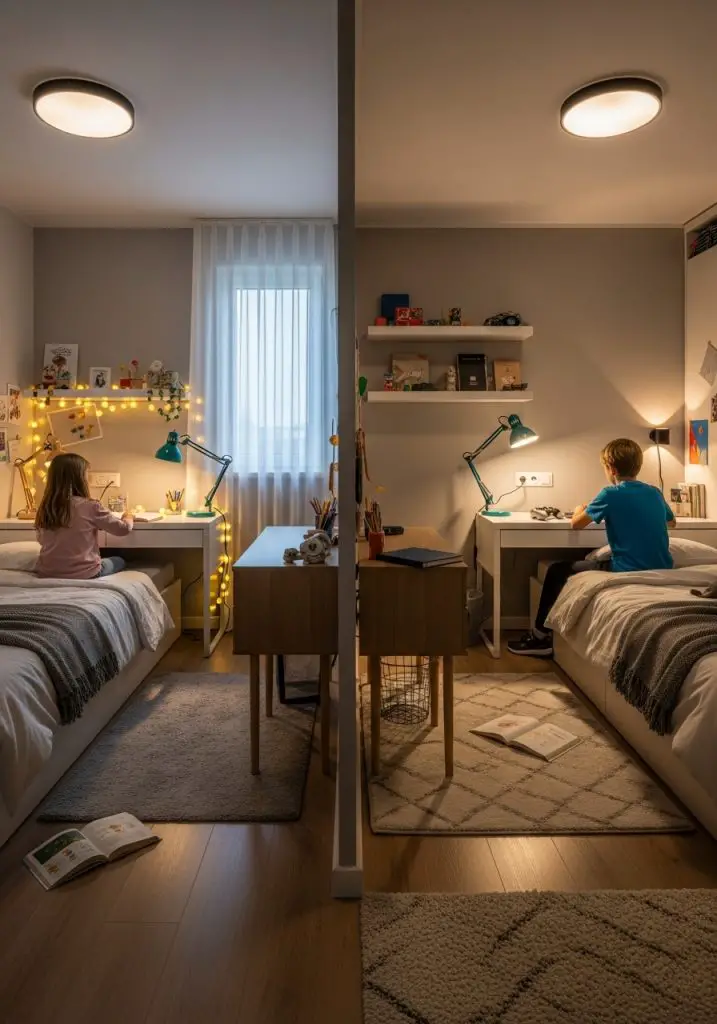
Lighting sets the vibe. Combine overhead lights, desk lamps, and string lights for flexibility. My niece prefers fairy lights at night, my nephew uses a bright desk lamp for gaming. Everyone gets their mood, nobody fights over bulbs.
Pro tip: Dimmable lights = magic. Kids can adjust brightness without stepping on each other’s toes.
18. Personal Bulletin Boards
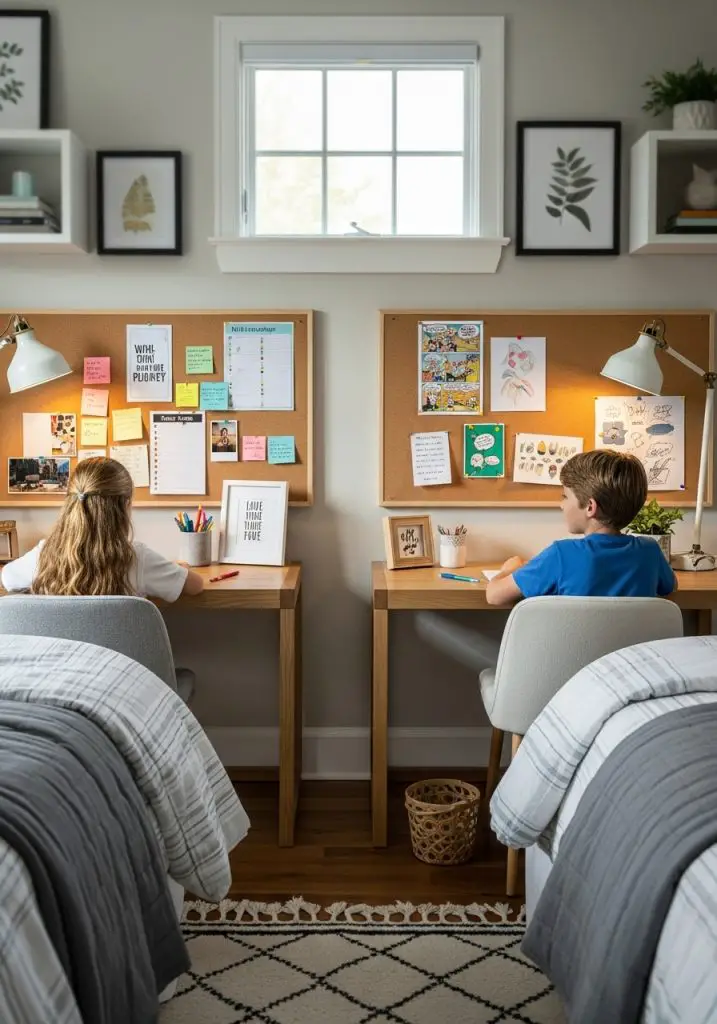
Bulletin boards are cheap, functional, and cute. Each child gets one board for schedules, reminders, or favorite pics. My niece uses sticky notes like a mini planner, my nephew pins comic strips.
Why it works: Keeps kids organized and gives them autonomy—without taking over walls.
19. Sliding Door Wardrobe
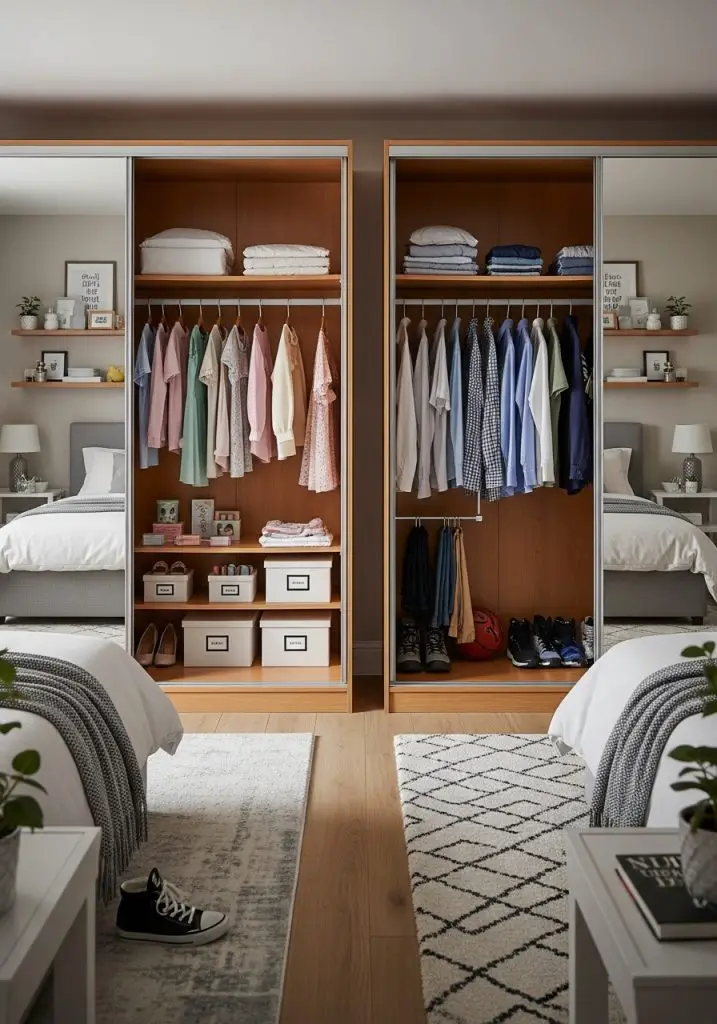
Sliding doors save space and reduce accidental wardrobe collisions. My niece and nephew have sliding wardrobes on opposite walls. Less bumping into each other = fewer arguments = happier parents.
Extra: Mirror panels on doors add depth and double as a fun fashion spot for kids to admire their outfits.
20. Shared Reading Nook
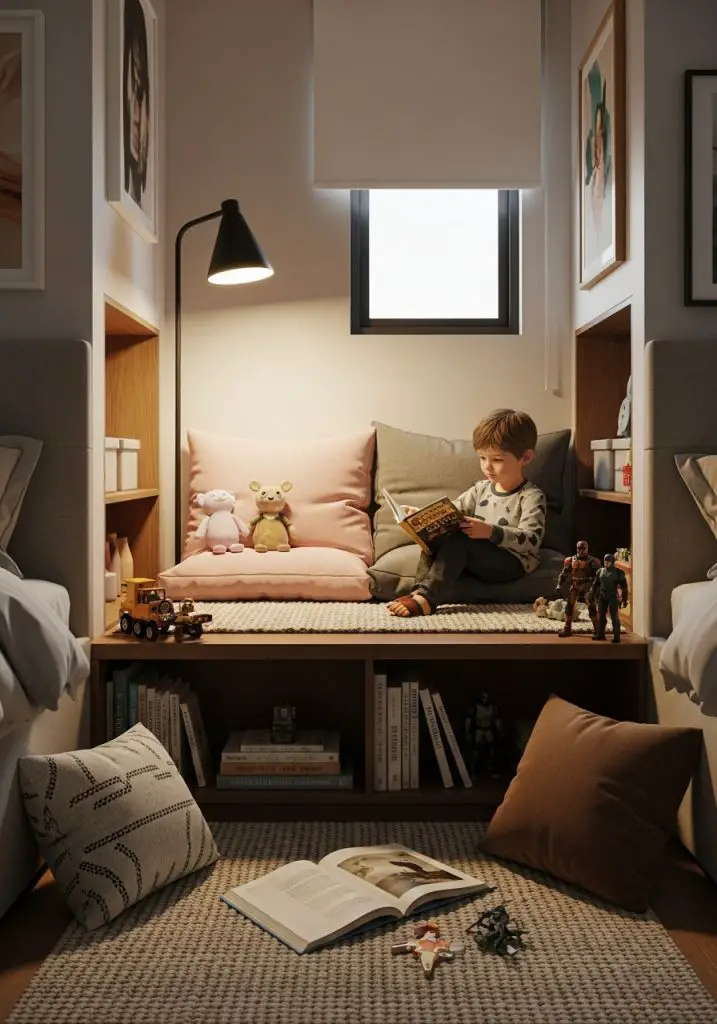
Even in shared rooms, reading corners are essential. Use a small sofa or bean bags with a floor lamp. My niece and nephew love curling up separately but still close enough to chat.
Tip: Keep a small shared bookshelf nearby. Encourages sharing stories and exploring each other’s interests.
21. Wall Hooks for Personal Items
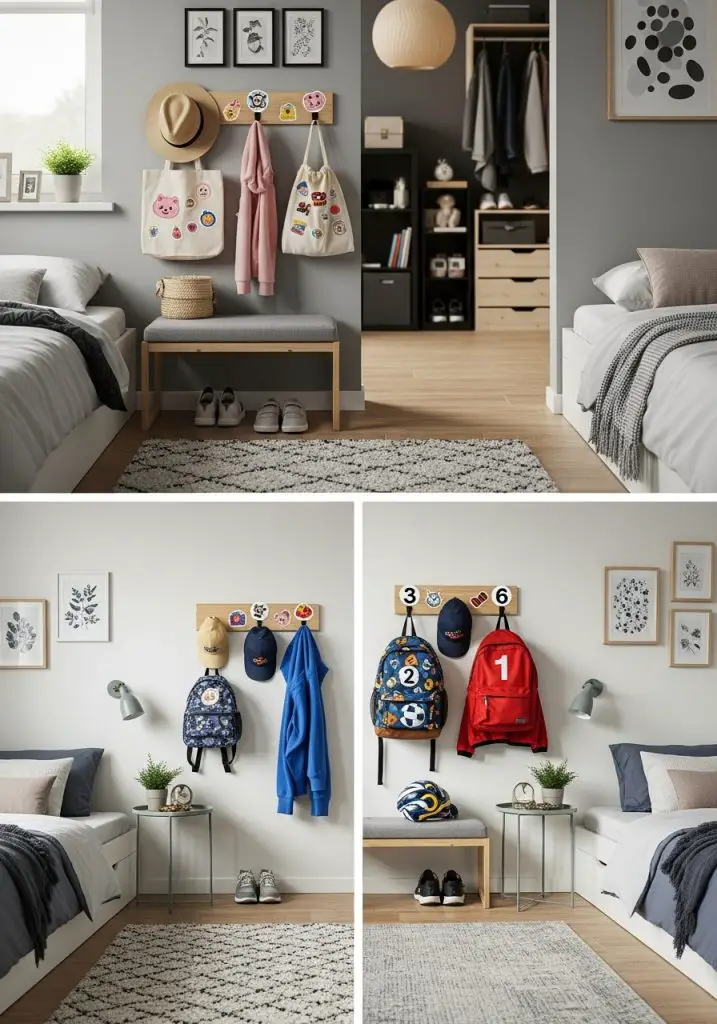
Hooks are simple but magical. Each kid gets a set of hooks for bags, hats, or jackets. My niece labels hers with cute stickers, my nephew uses sporty ones. Instant order, zero mix-ups.
Why it’s smart: It trains kids to hang up things independently and keeps the room tidy with minimal effort.
Wrapping It Up
Designing a boy and girl shared bedroom doesn’t have to be a nightmare. With thoughtful zoning, clever storage, and personalized touches, you can create a space that balances individuality and togetherness. From bunk beds to pegboards, color-coded accents to reading nooks, these 21 ideas cover everything from functionality to fun.
Remember: flexibility, creativity, and a sense of humor are your best friends here. Trust me, a little planning now saves a lot of “whose side is this?” arguments later. Go forth, decorate, and make that shared bedroom a space your kids actually want to spend time in! 😊

Sarah Johnson have over 15 years of experience in residential design, she specializes in creating stylish, functional spaces that feel like home. Her work has been featured in Better Homes & Gardens and Architectural Digest, and through HouzGem, she shares practical tips and inspiration to help readers transform their living spaces with confidence and creativity.

